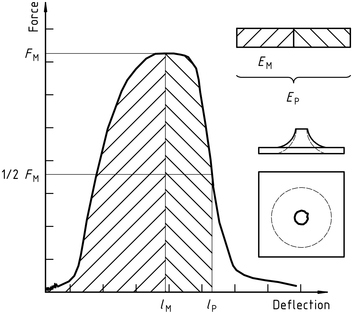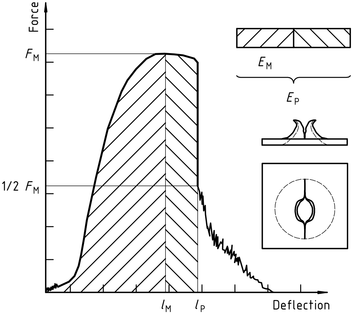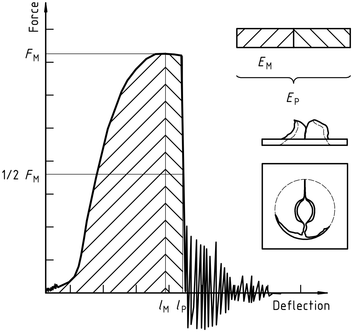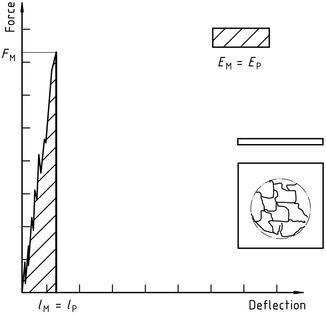ISO 6603-2-2000 “пластмаси – Визначення ударної поведінки твердої пластмаси на прокол – частина 2: Випробування приладу на удар”
вступ
ISO (Міжнародна організація стандартизації) є глобальним альянсом національних органів стандартизації (Органи-члени ISO). Розробка міжнародних стандартів зазвичай здійснюється через технічні комітети ISO. Кожна установа-член, зацікавлена в темі, з якої було створено технічний комітет, має право бути представленою в цьому комітеті. До цієї роботи також залучені міжнародні урядові та неурядові організації, які співпрацюють з ISO. ISO тісно співпрацює з Міжнародною електротехнічною комісією (IEC) з усіх питань стандартизації електротехніки.
Міжнародні стандарти складаються відповідно до правил, наведених у ч 3 Директиви ISO/IEC.
Проект міжнародного стандарту, прийнятий Технічним комітетом, буде розіслано членським організаціям для голосування. Публікація як міжнародний стандарт потребує схвалення принаймні 75% установ-членів.
Зверніть увагу, що деякі елементи цієї частини ISO 6603 Може бути об'єктом патентного права. ISO не несе відповідальності за ідентифікацію будь-якого або всіх таких патентів.
Міжнародний стандарт ISO 6603-2 був розроблений Технічним комітетом ISO/TC 61, пластмаси, Підкомітет SC 2, Механічні властивості.
ISO 6603-2-2000 “пластмаси – Визначення ударної поведінки твердої пластмаси на прокол – частина 2: Випробування приладу на удар”
Друге видання скасовує та замінює перше видання (ISO 6603-2:1989), який був технічно доопрацьований.
ISO 6603 складається з наступних частин, під загальним заголовком Пластмаси – Визначення ударної поведінки твердої пластмаси на прокол:
– частина 1: Неінструментальні ударні випробування
– частина 2: Інструментальне випробування на удар
Appendices A to E of this part of ISO 6603 are for information purposes only.
1 Діапазон
Ця частина ISO 6603 specifies a test method for determining the puncture impact properties of rigid plastics in the form of flat specimens using instruments that measure force and deflection. This applies if a force-deflection or force-time plot recorded at a nominal constant firing pin speed is necessary to characterize impact behavior in detail.
ISO 6603-1 can be used if ISO 6603-1 is sufficient to characterize the impact behavior of plastics by an impact failure energy threshold based on many samples.
The purpose of this part of ISO 6603 is not to explain the mechanisms that occur at each particular point on the force-deflection chart. These explanations are the task of scientific research.
Note also Article 1 of ISO 6603-1:2000.
ISO 6603-2-2000 “пластмаси – Визначення ударної поведінки твердої пластмаси на прокол – частина 2: Випробування приладу на удар”
2 Нормативні посилання
Наведені нижче нормативні документи містять положення, які, за допомогою посилання тут, складають положення цієї частини ISO 6603. Для датованих посилань, будь-які наступні перегляди або поправки до цих публікацій не застосовуватимуться. Проте, Сторони угод, заснованих на цій частині ISO 6603 пропонується дослідити можливість застосування нових редакцій наступних нормативних документів. Для недатованих посилань, застосовується нова редакція нормативного документа, на який посилається. Члени ISO та IEC ведуть реєстр чинних міжнародних стандартів.
ISO 2602:1980, Statistical interpretation of test results – mean estimation – confidence intervals.
ISO 6603-1:2000, пластмаси. Determination of puncture impact behavior of rigid plastics. частина 1: Non-instrumental impact tests.
3 Терміни та визначення
For this part of ISO 6603, застосовуються наступні терміни та визначення.
3.1 Impact velocity
The speed of the firing pin relative to the support at the time of impact
Примітка 1: The impact velocity is expressed in meters per second (РС).
3.2 Force F
The force exerted by the firing pin on the specimen in the direction of impact
Примітка 1: Force is expressed in Newtons (Н).
3.3 Deflection l
The relative displacement between the firing pin and the specimen holder begins with the first contact between the firing pin and the specimen
Примітка 1: Deflection is expressed in millimeters (мм).
3.4 Energy
The energy expended to deform and penetrate the specimen up to the deflection L
ISO 6603-2-2000 “пластмаси – Визначення ударної поведінки твердої пластмаси на прокол – частина 2: Випробування приладу на удар”
Примітка 1: Energy is expressed in joules (Дж).
Примітка 2: The energy is measured as the integral of the force-deflection curve from the point of impact to the deflection l.
3.5 Maximum Power FM
The test process occurs with maximum force
Примітка 1: Maximum force is expressed in Newtons (Н).
3.6 Deflection lm at maximum force
Deflection at maximum power FM
Примітка 1: Deflection under maximum force is expressed in millimetres (мм).
3.7 Energy to maximum power
The energy expended at maximum force reaches deflection lM
Примітка 1: The most powerful energy is expressed in joules (Дж).
3.8 Puncture deflection lP
The force is reduced to half the deflection of the maximum force F M
See Figures 1-4 і Примітка 3.9.
Примітка 1: Puncture deflection is expressed in millimeters (мм).
ISO 6603-2-2000 “пластмаси – Визначення ударної поведінки твердої пластмаси на прокол – частина 2: Випробування приладу на удар”
3.9 Puncture Energy
The energy consumed until the puncture deflects lP
See Figures 1-4 and note 2.
Примітка 1: The puncture energy is expressed in joules (Дж).
Примітка 2: When testing hard materials, a probe mounted at a distance from the impact tip can record the friction force acting between the cylindrical part of the firing needle and the piercing material. The corresponding friction energy should not be included in the piercing energy, so the piercing energy is limited to that deflection, where the force drops to half of the maximum force FM.
3.10 Impact Failure
The mechanical properties of the material to be measured may be of one of the following types (see note) :
| a) | YD | yIELDING(Zero slope at maximum force), followed by DEEP drawing |
| b) | YS | (Zero slope at maximum force) then (at least partially) the S table cracks |
| в) | yu | yIELDING(Zero slope at maximum force) and then u unstable cracking |
| d) | New function | no yielding |
ISO 6603-2-2000 “пластмаси – Визначення ударної поведінки твердої пластмаси на прокол – частина 2: Випробування приладу на удар”
Примітка 1: A comparison of Figures 2 і 3 shows that puncture deflection lP and puncture energy EP are the same for failure types YS and YU. As shown in Figure 4, in the case of failure type YU, the deflection and energy have the same values at the maximum and at the puncture. For complex behaviour, see annex A.
малюнок 1 – An example of a force-deflection diagram of the typical appearance of a specimen after yielding (zero slope at maximum force) followed by deep drawing and testing (using lubrication)

малюнок 2 – Example force-deflection diagram of failure by yield (zero slope at maximum force), followed by steady crack growth, and typical appearance of the specimen after testing (using lubrication)

малюнок 3 – Example force-deflection diagram of failure through yield (zero slope at maximum force) and the typical appearance (lubrication) of the specimen after testing

Note the natural vibration of the force detector can be seen after the unstable cracking (firing pin and weighing sensor).
малюнок 4 – Example force-deflection diagram of unyielding failure followed by unstable crack propagation and typical appearance of the specimen after testing (using lubrication)

ISO 6603-2-2000 “пластмаси – Визначення ударної поведінки твердої пластмаси на прокол – частина 2: Випробування приладу на удар”
Відкритим є лише стандартний інформаційний розділ. Щоб переглянути повний вміст, необхідно придбати стандарт через офіційні канали.
